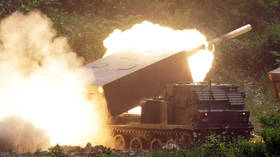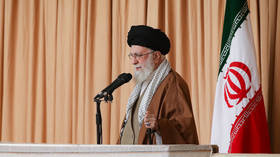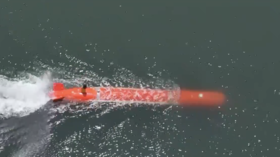Boris Johnson wants heavier weapons for Ukraine

UK Prime Minister Boris Johnson called on Friday for Ukraine’s Western allies to send MLRS rocket artillery systems in a bid to hold back Russian advances. Sending such systems would represent a major escalation in the arms pipeline to Kiev, but the US is already considering such a step.
In an interview with Bloomberg, Johnson said that the M270 Multiple Launch Rocket System (MLRS) platform would “enable [the Ukrainians] to defend themselves against this very brutal Russian artillery, and that’s where the world needs to go.”
“It’s absolutely vital we continue to support the Ukrainians militarily,” Johnson stated. However, he did not say whether the UK would commit any of its 42 MLRS systems to Kiev.
Jointly developed by the US, UK, West Germany, France and Israel in the late 1970s, the M270 can fire a salvo of 12 rockets up to 50 miles (80 kilometers) from the back of a tracked vehicle. Some 1,300 units have been built since 1980, with the vast majority fielded by the US and the rest used by Washington’s NATO allies and some countries in the Middle East and Asia.
Ukrainian officials have pleaded with the West for M270 systems and for the US-made M142 HIMARS, essentially a more lightweight version of the M270 that can fire six rockets at the same range, or a single missile up to 190 miles (300 kilometers).
The Biden administration may announce deliveries of both the M270 and M142 platforms to Ukraine as early as next week, CNN reported on Thursday, citing government officials. However, US officials told CNN and Reuters that Washington was concerned about Ukraine using the M142’s longer-range projectiles to strike targets inside Russia, which would carry a “risk of escalation.”
Getting these heavy vehicles and their ammunition into Ukraine could also prove problematic. Russia has declared convoys and warehouses of Western arms “legitimate targets,” and regularly carries out air and missile strikes on stockpiles of these weapons inside Ukraine.
The MLRS and HIMARS systems are the latest weapons touted by the West as potential “game changers” for Ukraine. Shoulder-fired NLAW missiles, Switchblade kamikaze drones, Starstreak anti-air missiles and Turkish-made Bayraktar UAVs have all been touted as wonder weapons, but have thus far failed to turn the tide of battle against Moscow’s forces.
Since the surrender of the last Ukrainian forces in Mariupol earlier this month, Russian troops and soldiers from the Donetsk and Lugansk People’s Republics have captured the key towns of Popasnaya and Liman in northern Donbass and closed in on Slavyansk. Meanwhile, with fighting continuing in the Severodonetsk and Lisichansk salient, Russian troops are now within several kilometers of the major supply hub of Bakhmut.
Speaking to Bloomberg, Johnson claimed that Russia’s military progress in the Donbass was “slow,” but admitted that it was “I’m afraid, palpable.”
On Wednesday, Ukrainian Foreign Minister Dmitry Kuleba told Kiev’s foreign backers at the World Economic Forum in Davos, Switzerland, that the situation in the Donbass was “extremely bad,” and would get worse if Kiev didn’t get MLRS units ASAP.















